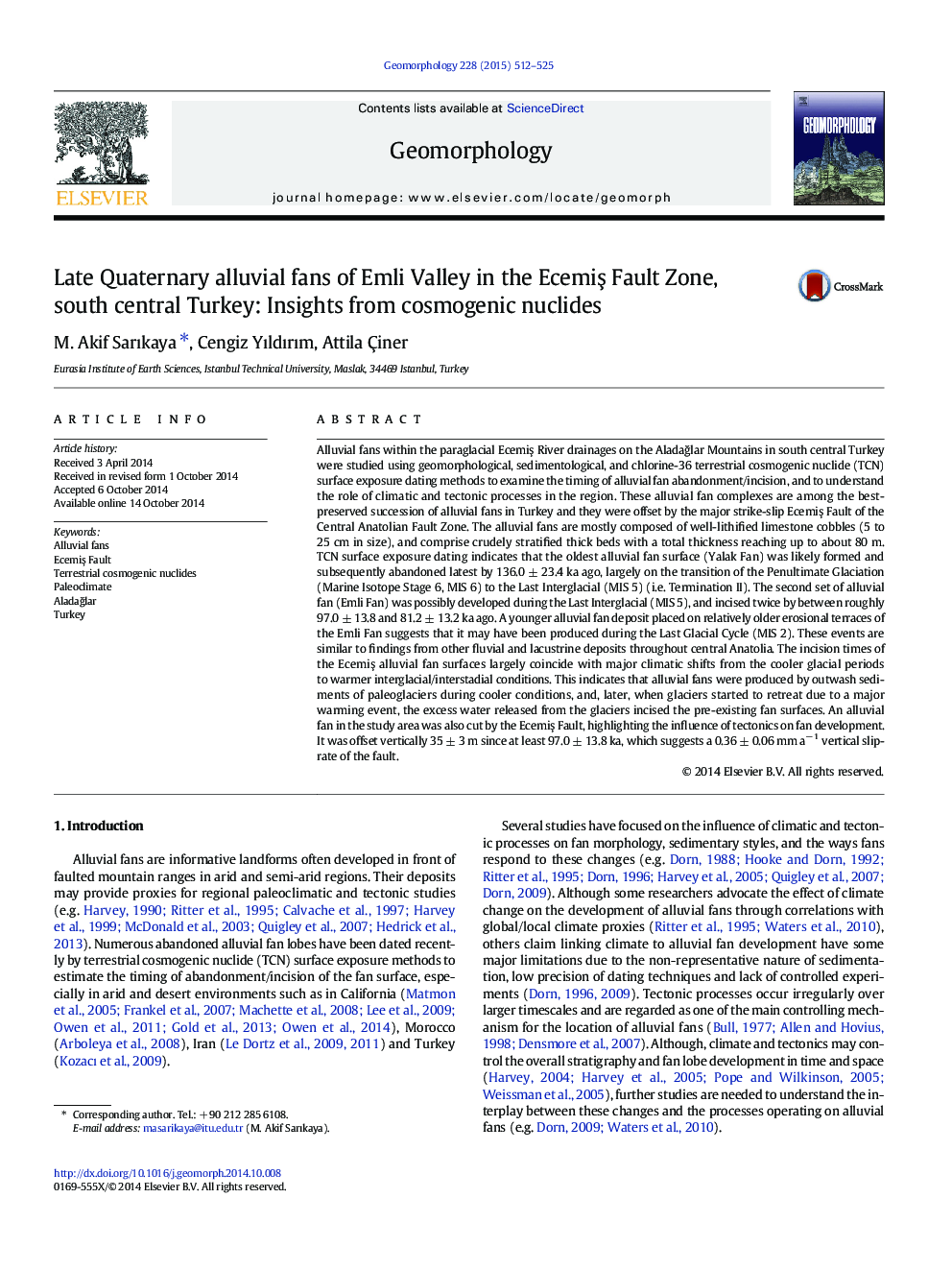| کد مقاله | کد نشریه | سال انتشار | مقاله انگلیسی | نسخه تمام متن |
|---|---|---|---|---|
| 6432303 | 1635421 | 2015 | 14 صفحه PDF | دانلود رایگان |

- Offset alluvial fan surfaces were dated with cosmogenic chlorine-36 nuclides.
- Surfaces were abandoned by 136.0 ± 23.4 ka, 97.0 ± 13.8 ka and 81.2 ± 13.2 ka.
- ago.
- Quaternary vertical slip-rate of the EcemiÅ Fault was calculated as
- 0.36 ± 0.06 mm aâ 1.
Alluvial fans within the paraglacial EcemiÅ River drainages on the AladaÄlar Mountains in south central Turkey were studied using geomorphological, sedimentological, and chlorine-36 terrestrial cosmogenic nuclide (TCN) surface exposure dating methods to examine the timing of alluvial fan abandonment/incision, and to understand the role of climatic and tectonic processes in the region. These alluvial fan complexes are among the best-preserved succession of alluvial fans in Turkey and they were offset by the major strike-slip EcemiÅ Fault of the Central Anatolian Fault Zone. The alluvial fans are mostly composed of well-lithified limestone cobbles (5 to 25 cm in size), and comprise crudely stratified thick beds with a total thickness reaching up to about 80 m. TCN surface exposure dating indicates that the oldest alluvial fan surface (Yalak Fan) was likely formed and subsequently abandoned latest by 136.0 ± 23.4 ka ago, largely on the transition of the Penultimate Glaciation (Marine Isotope Stage 6, MIS 6) to the Last Interglacial (MIS 5) (i.e. Termination II). The second set of alluvial fan (Emli Fan) was possibly developed during the Last Interglacial (MIS 5), and incised twice by between roughly 97.0 ± 13.8 and 81.2 ± 13.2 ka ago. A younger alluvial fan deposit placed on relatively older erosional terraces of the Emli Fan suggests that it may have been produced during the Last Glacial Cycle (MIS 2). These events are similar to findings from other fluvial and lacustrine deposits throughout central Anatolia. The incision times of the EcemiÅ alluvial fan surfaces largely coincide with major climatic shifts from the cooler glacial periods to warmer interglacial/interstadial conditions. This indicates that alluvial fans were produced by outwash sediments of paleoglaciers during cooler conditions, and, later, when glaciers started to retreat due to a major warming event, the excess water released from the glaciers incised the pre-existing fan surfaces. An alluvial fan in the study area was also cut by the EcemiÅ Fault, highlighting the influence of tectonics on fan development. It was offset vertically 35 ± 3 m since at least 97.0 ± 13.8 ka, which suggests a 0.36 ± 0.06 mm aâ 1 vertical slip-rate of the fault.
Journal: Geomorphology - Volume 228, 1 January 2015, Pages 512-525